My Radio History
|
|
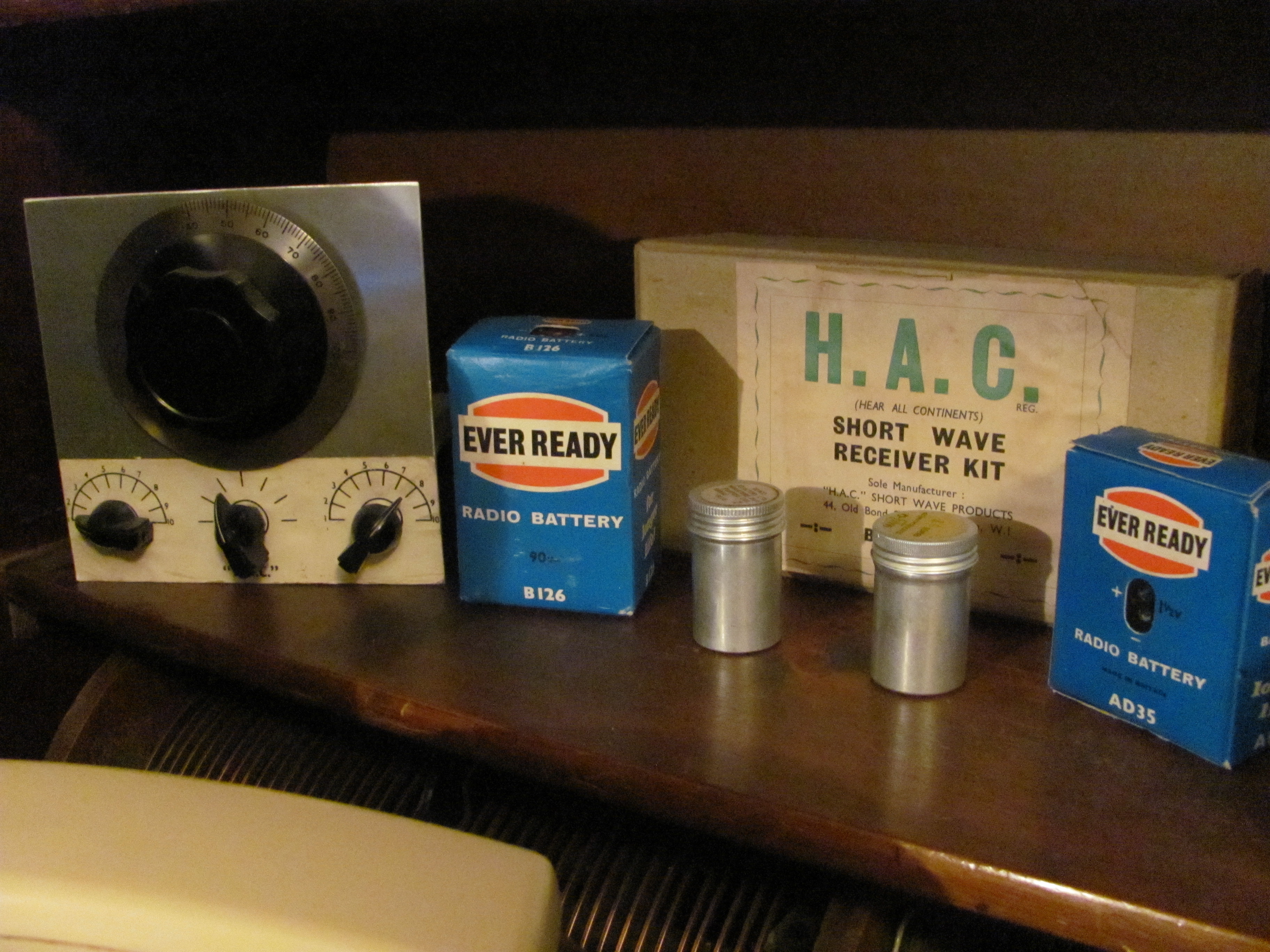
|
When I was at junior school, I
was introduced to Amateur Radio by Bert G2FIX, who was a fellow Bell ringer.
Soon I and fellow school mate joined the Salisbury Short-Wave Club. We
both saved up our pocket money to buy a HAC (Hear All Continents).
This Straight set (super-regen) proved extremely sensitive, logging thousands
of Amateurs from all around the world. The LT battery was always a source
of concern, as its frequent replacement was a drain on the pocket money.
The oscillator from the receiver would re-radiate up the aerial and could
be detected up to a mile away. This did cause some trouble when listening to our local
Amateurs, so we used this to our advantage, as by varying the reaction control they could
confirm which one of the SWL,s it was and give us a mention on the air. |
|
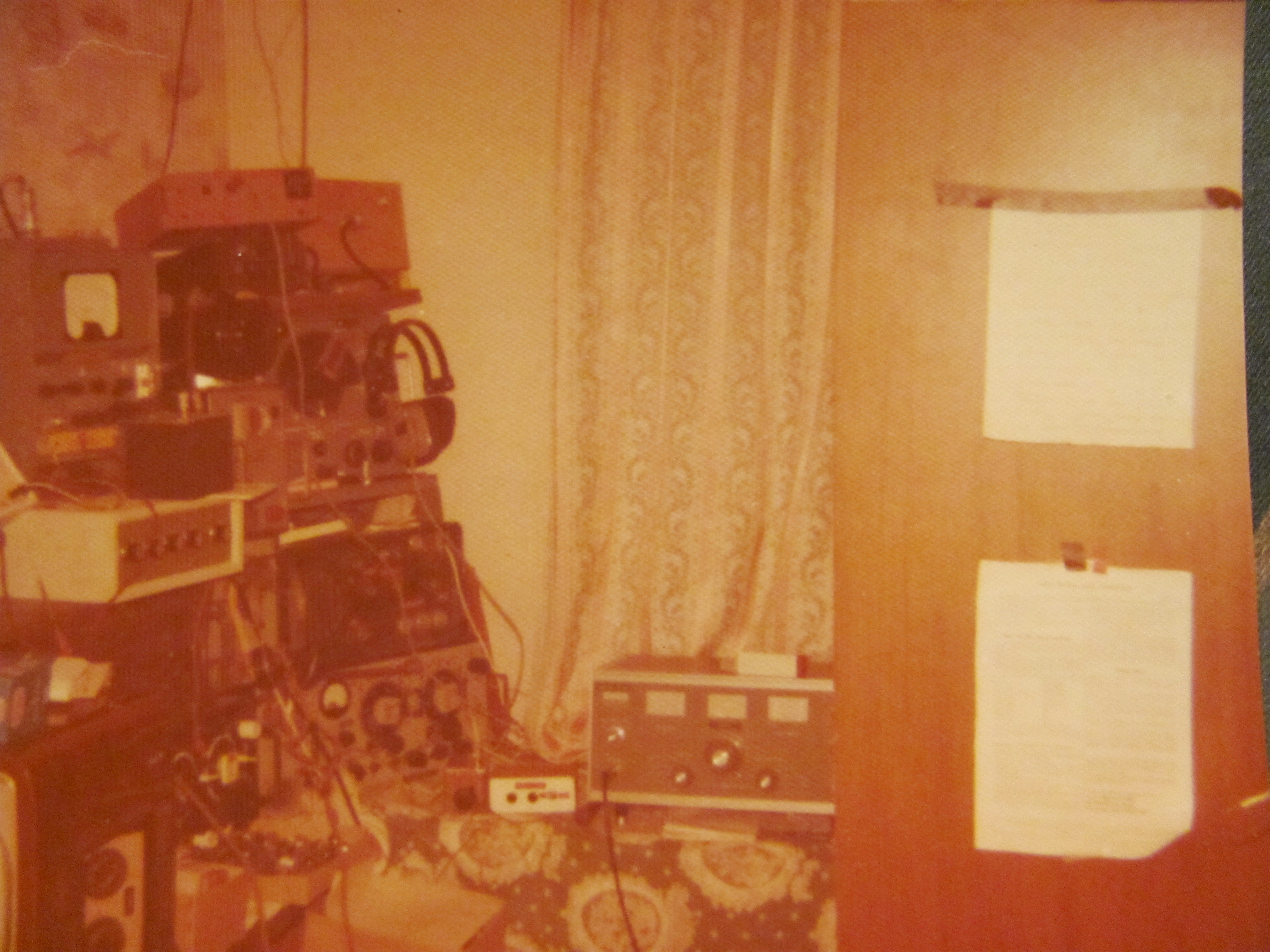
|
The station expanded with the addition of a
Trio 9R59DE. This was lent on approval, But was quickly purchased, as one of
the first stations heard, was an American mobile. On 10 and 15m the Trio
was much better than the HAC, this was also at a sunspot high, so there was
plenty of strong DX.. Soon after lots of War surplus gear arrived from
local amateurs and rallies. Around this time wooden TV's and radio's from
the 50's were often found at the local dump. These were transported home
on my go-kart for dismantling, the remainder being returned to the
dump. Many hours were happily spent, lobbing stone at the neck of the TV
tubes, hoping for a direct hit. They used to go off like a bomb, emitting a
blue (no doubt) toxic haze. |
|
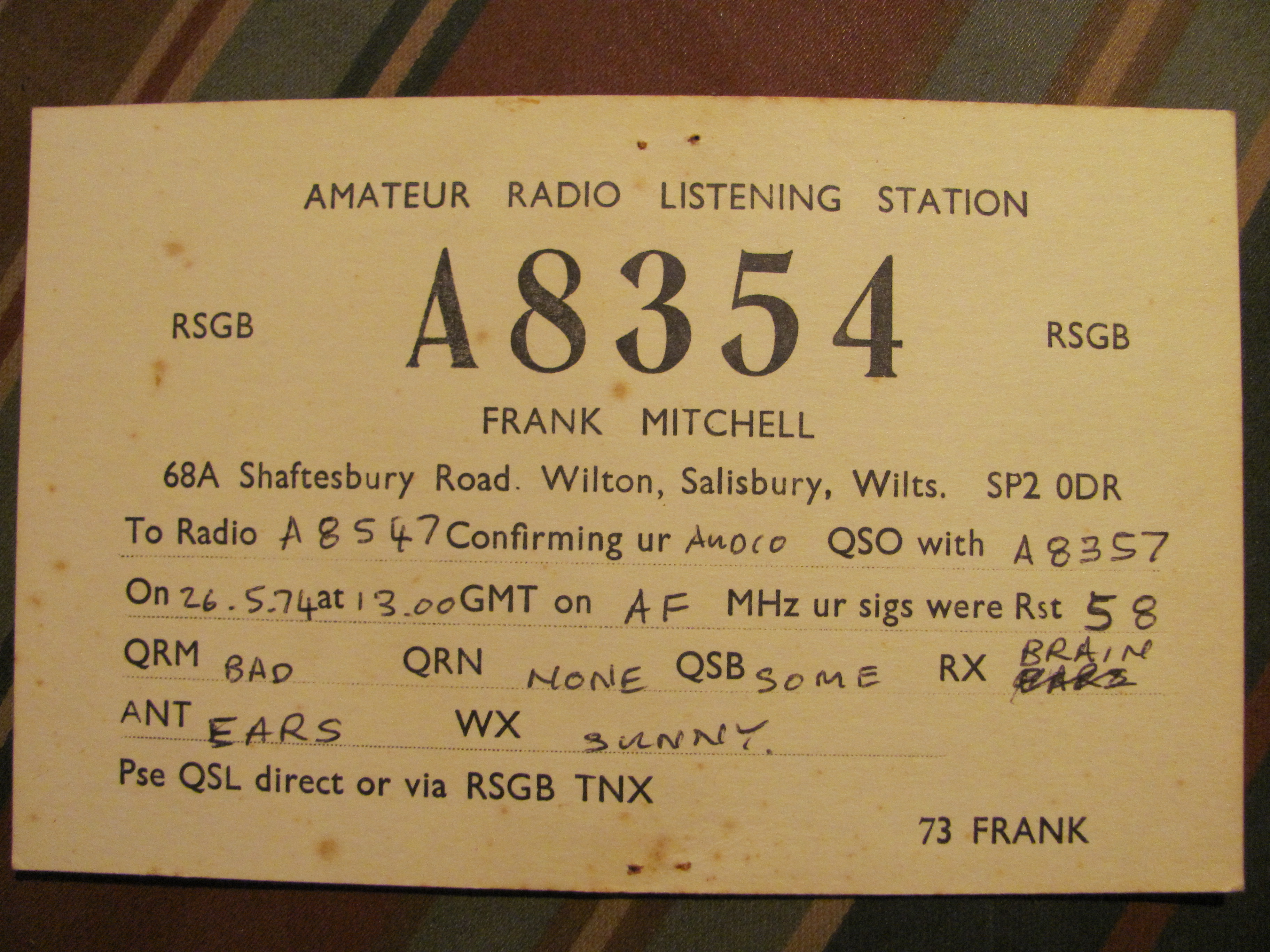
|
I lived on the a mile or so from the other SWL's,
but we were all eager to communicate with each other. At school we commandeered
the old loud speaker cable system, which was connected to every classroom.
Our little audio transceivers proved a bit hit
with classmates. An ambitious attempt was made to run a wire from my QTH to
the other SWL's over a mile away. We soldered together top the fence wires
and used TV field coil wire, where there wasn't a fence, Major obstacles
such as a two rivers and minor road and the A30 didn't deter
us. Armed with 50 watt audio TX , reversed for RX, we had lots
of gain, but also lot of hum from the ground return path. For many
years a wire ran up the curb and through the back of peoples gardens
between A8354 and A8427. Later we tried modulated light and more successful
CW from car headlights on poles across the valley. Having got to know
the local Post office enforcement officer, we then ventured onto low
power RF. on CW and the AM, using B44's and by modulating 27 Mhz model
aircraft controllers. |
|
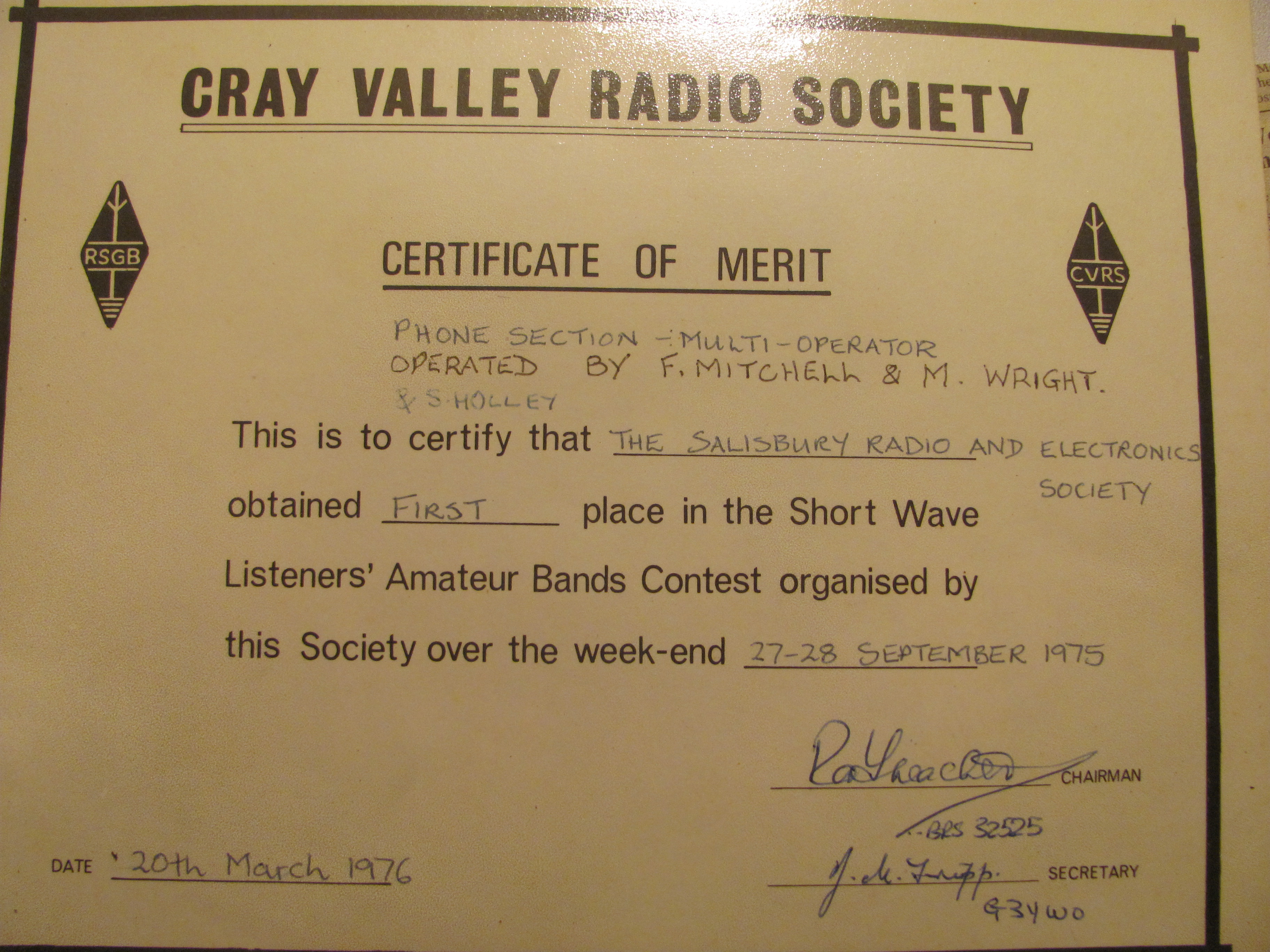
|
Our local group of SWLs often got together fro
multiband contests. Often the contests were 24 hour, taking it in shifts
through the night. Our equipment consisted of mainly 12 volt wartime
equipment and a thing which came to be known as the "Surestart
linear",
which was actually a battery charger, but gave a real boost to the reception when switched on.
Latterly we hit the modern age with the Trio
and Reme45. |
|
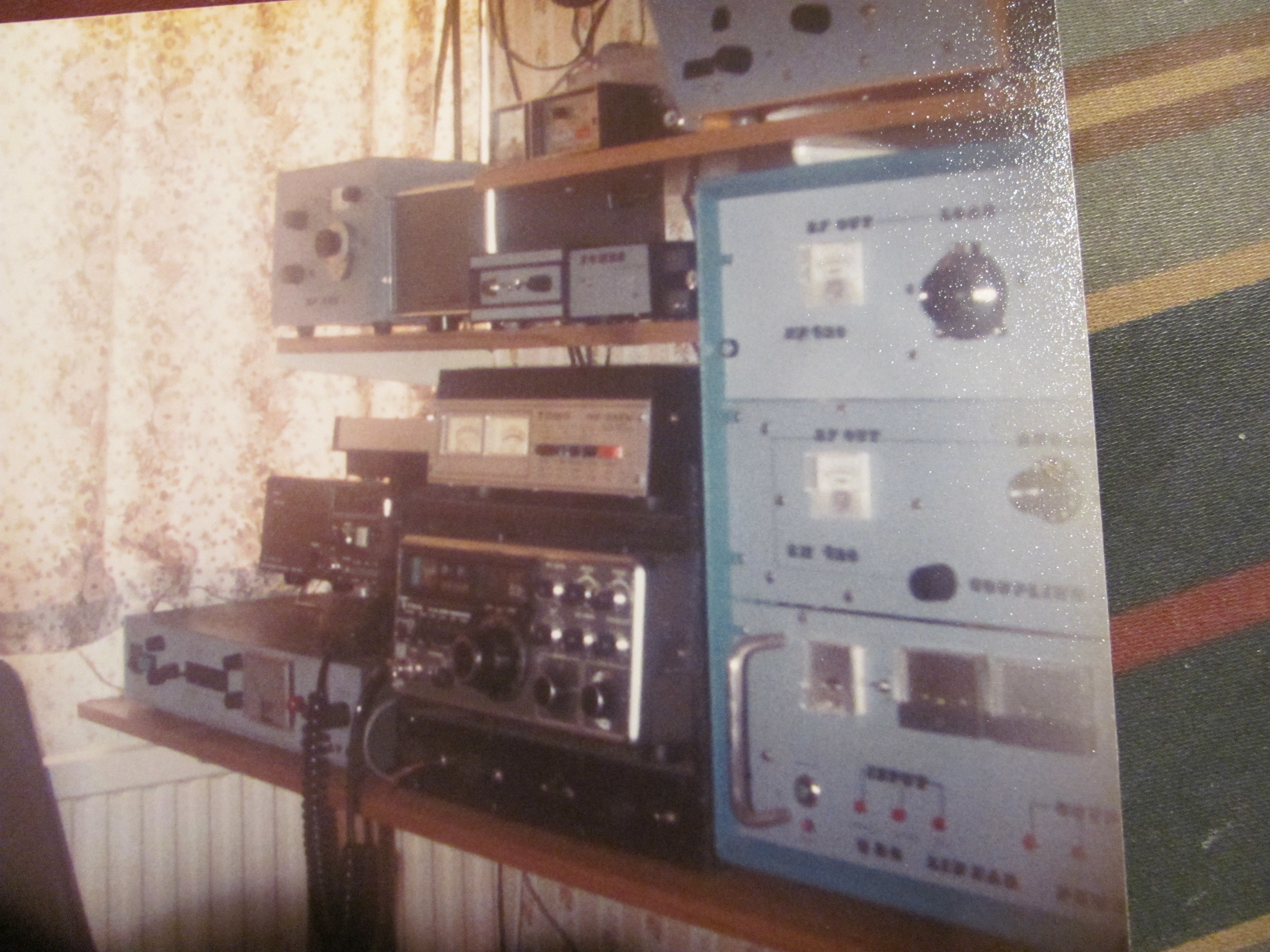
|
In 1977 I took the RAE with 24 other
candidates, these were the golden days of the hobby, as locally we
had large electronic companies and military establishments.
With the class B ticket I ventured on to 2 meters. A Telford TC7 tunable IF,
was used to spin from 144-146 mhz, as most operators had single crystal
controlled transmitters, so duplex was normal. My TX had a VFO ! and 80
watts from a QQV0-640. With my first months salary I bought a Trio
TR220GX and converted my old TX to a linear, soon followed a Liner2 for
SSB and a 14 ele Parabeam, DX was at my finer tips. .Home construction the
took off, making transverter, linears etc for the other Class B bands. Subsequently.
having the ability to repair most gear, I went through a phase of most
of the 70,s 80,s Amateur gear, buying up faulty rigs, using them for a while
and then passing the on. |
|
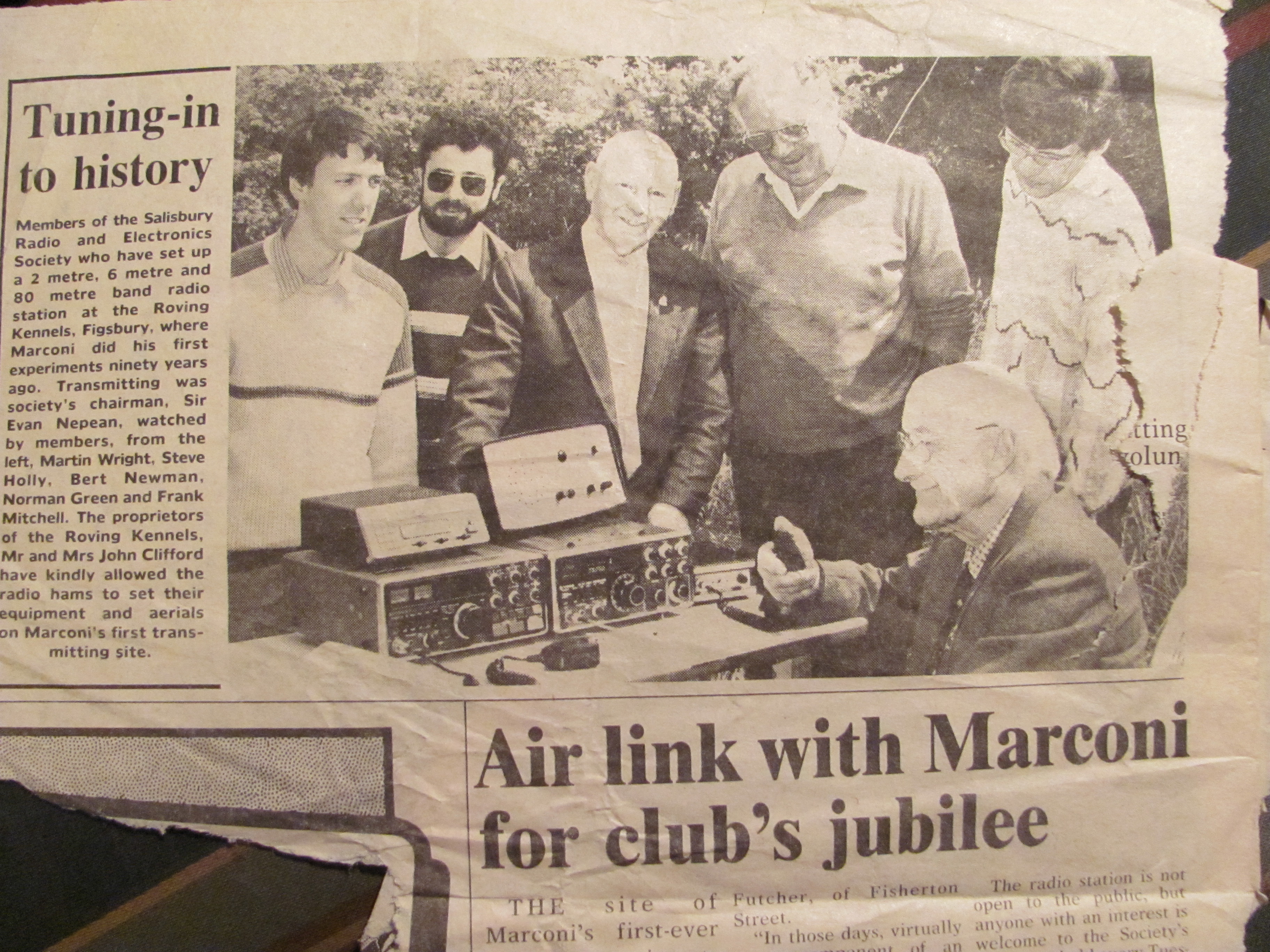
|
Bert G2FIX had long been associated with prompting
Amateur Radio in the Salisbury area. From the early 70's I actively helped, set up and
latterly operate G3FKF at shows and fetes. We had
several media successes in local and national papers, TV and Radio. Salisbury
having strong links with Marconi helped greatly in promoting the hobby. |
|

|
During the early 80's with the perceived fear of
Nuclear was just around the corner, I and a few other Amateurs became
Community Advisors and radiation meter readers. A natural progression was
to involve our radio hobby in this. A group was formed, aerials fitted to
our local and county council offices, leading to the bunkers. many exercises
were carried out ,with the emergency services. Aiming for better VHF communications
in our hilly area, we tried for a vhf repeater. unlike now
the existing repeaters were deemed to have large coverage areas, Salisbury
being covered by Bristol, Formarks and Swindon. Although not ideal we
had to go for a 70cm repeater. making the cavities and finding sensitive
uhf gear was very difficult. However I built over a period of time, three
versions of GB3SW which proved technically successful, but had limited appeal
to the local amateurs, most not having the expensive 70cm gear. |
|
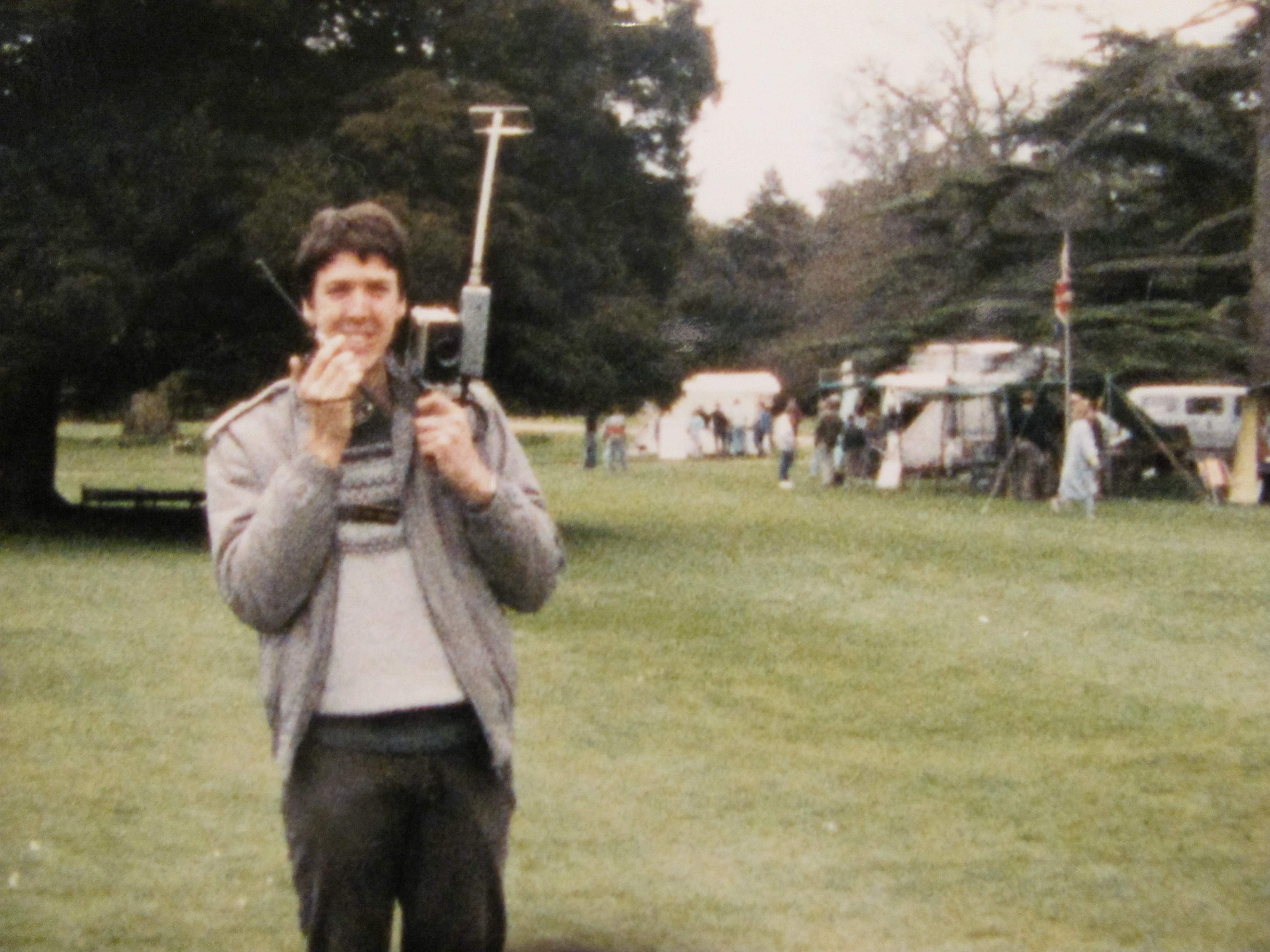
|
During the 80's we had a healthy Amateur fast
scan TV group, having nets each week. Most used the Four Tops or
Mick Mouse TV transmitters. My station was homebrew, with a caption
generators and new fangled color camera. With a good QTH and high power,
QSO's were possible up to 100 miles. Amateur TV was a real winner, for
promoting the hobby, using it portable at fêtes "as in picture"
with a little halo, or setting up lectures at youth groups, and
demonstrating live QSO's with other local ATV stations. |
|
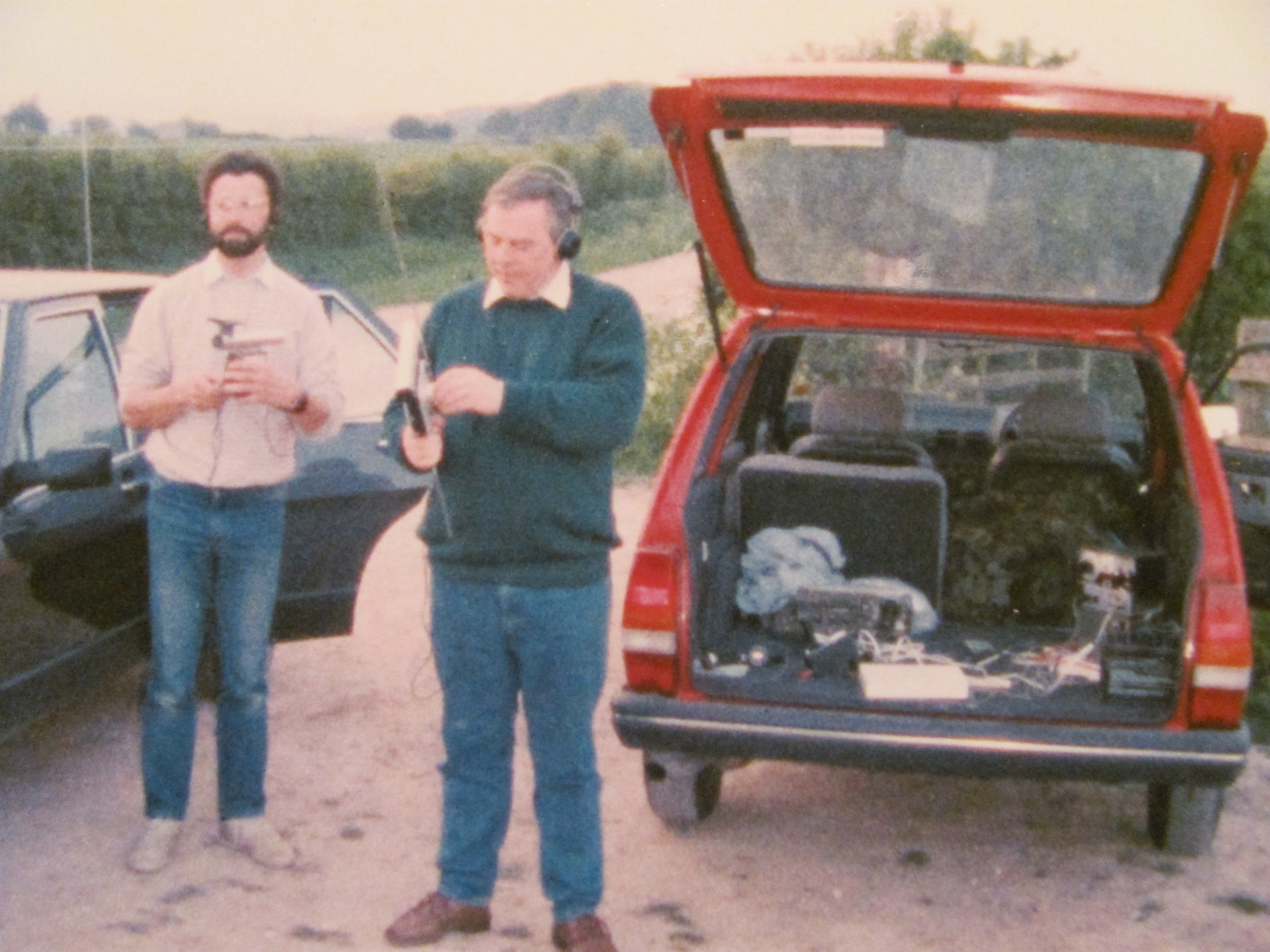
|
The Salisbury Radio club had long associations
with Top Band DF. G2FIX had been very active in DF
during the 50's/ 60's.
Over the years a group of us, became very proficient at hiding stations,
for the RSGB events.. Salisbury held the finals on occasions running three
stations. I
gave several lectures to other radio clubs and societies, on the complexity
of hiding and finding the stations, with the anecdotes of the disasters
and problems, we seen over the years, this always made an entertaining
evening. On many occasions I gave lectures on diverse radio subjects, giving
practical demonstrations of all aspects of the
hobby. |
|
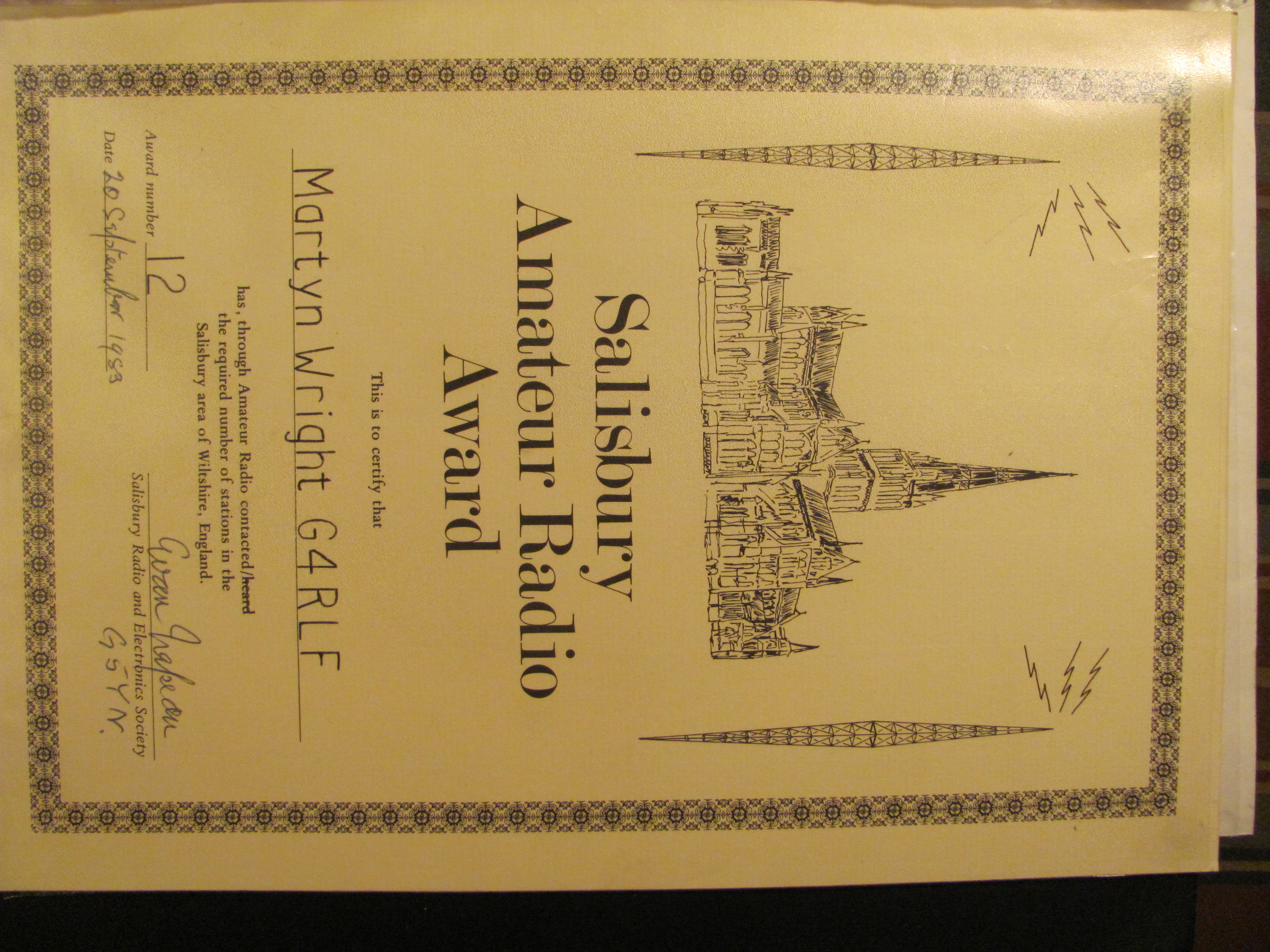
|
The Salisbury club G3FKF, always entered the MCC
CW contest and Field Day on 40 meters with an ideal QTH in
a soggy field. Ernies generator, crossed dipoles from the School playing fields. As the Club only used CW, I started operating VHF/UHF portable in
contests. Over the years I personally accumulated many awards and contest certificates. As a group we used to operate from hilltops, in field days
and single band contests. Today having limited time our current
group SADGITS "Salisbury and district Grand International Transmitting
Society", has been at the top of the PW contest for many years. |
|

|
Since the 80's I have somewhat neglected the
hobbies, as many classic and vintage cars have been restoration plus two
holiday homes.
In recent years, I have once again taken a strong interest in
repair and preservation on valved wartime and armature gear. The modern
station is fairly up to date, being active on most bands to 23cm and
having qro
on most of them. I am always keen to get hold of new gear for restoration
HOME
|